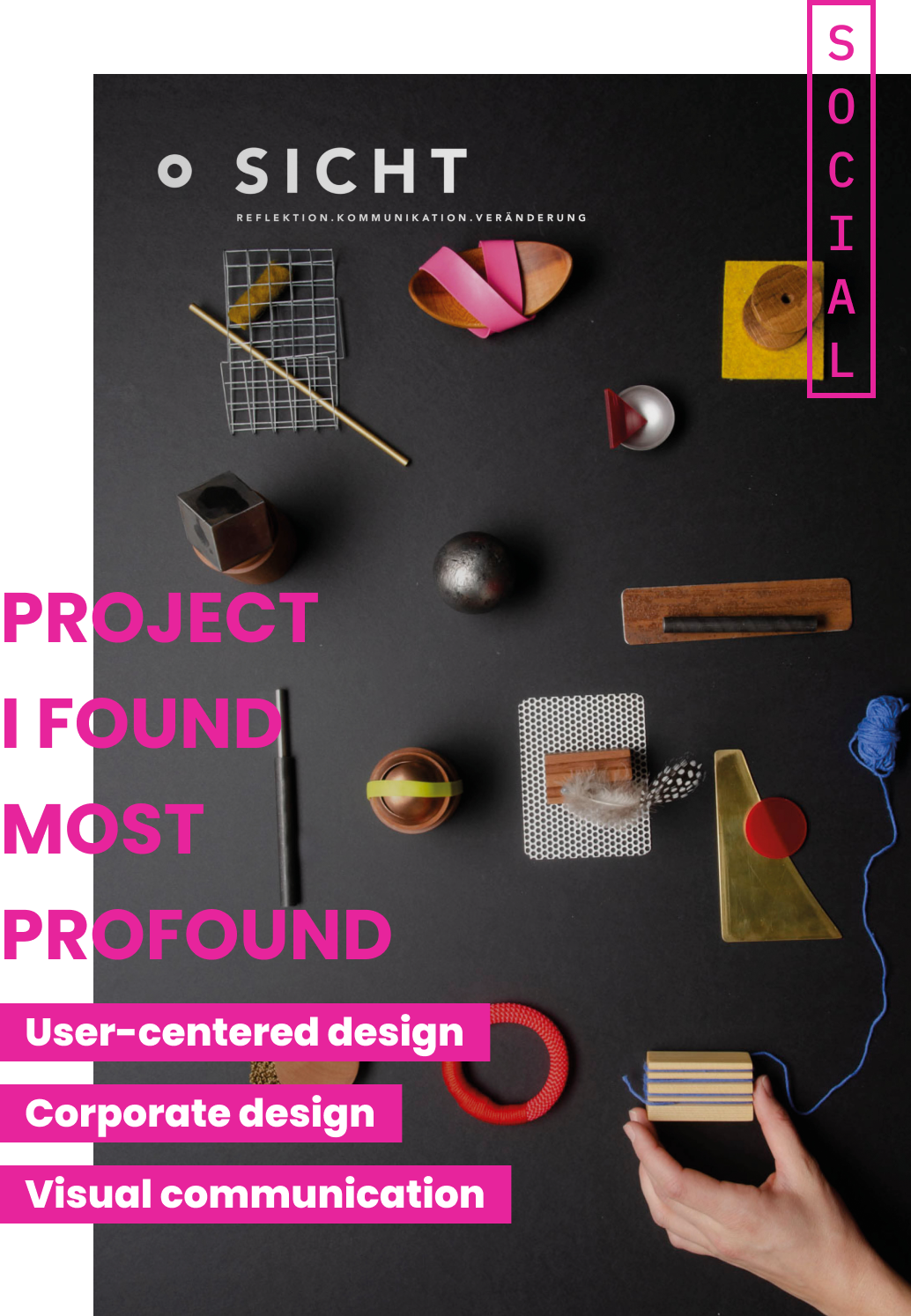
SICHT
Teaming Tools – Workshop and toolset for shaping social dynamics and mindful interaction in professional teams
My responsibilities:
Design Research
Visual Communication
Concept
Product Design
Branding
My partners:
Mit Vergnügen, Zeit Z2X, StudioComune
CONCEPT
Tools for better teamwork
Social abilities, such as empathic interaction and communication, fundamentally influence not only the well-being of individuals but also the effectiveness of teamwork.
The SICHT Teaming Tools aim to help teams to improve their social dynamics and offer a framework that consists of a workshop concept and toolset that make the unconscious dynamics visible to be able to establish mindful and empathic relations, following the team’s chosen objectives. Teams are guided through a process of
1 Reflection, to sensitize for the current dynamics,
2 Communication, to address issues they would like to improve in their teamwork and
3 Change, to develop strategies to work on these challenges in the future.
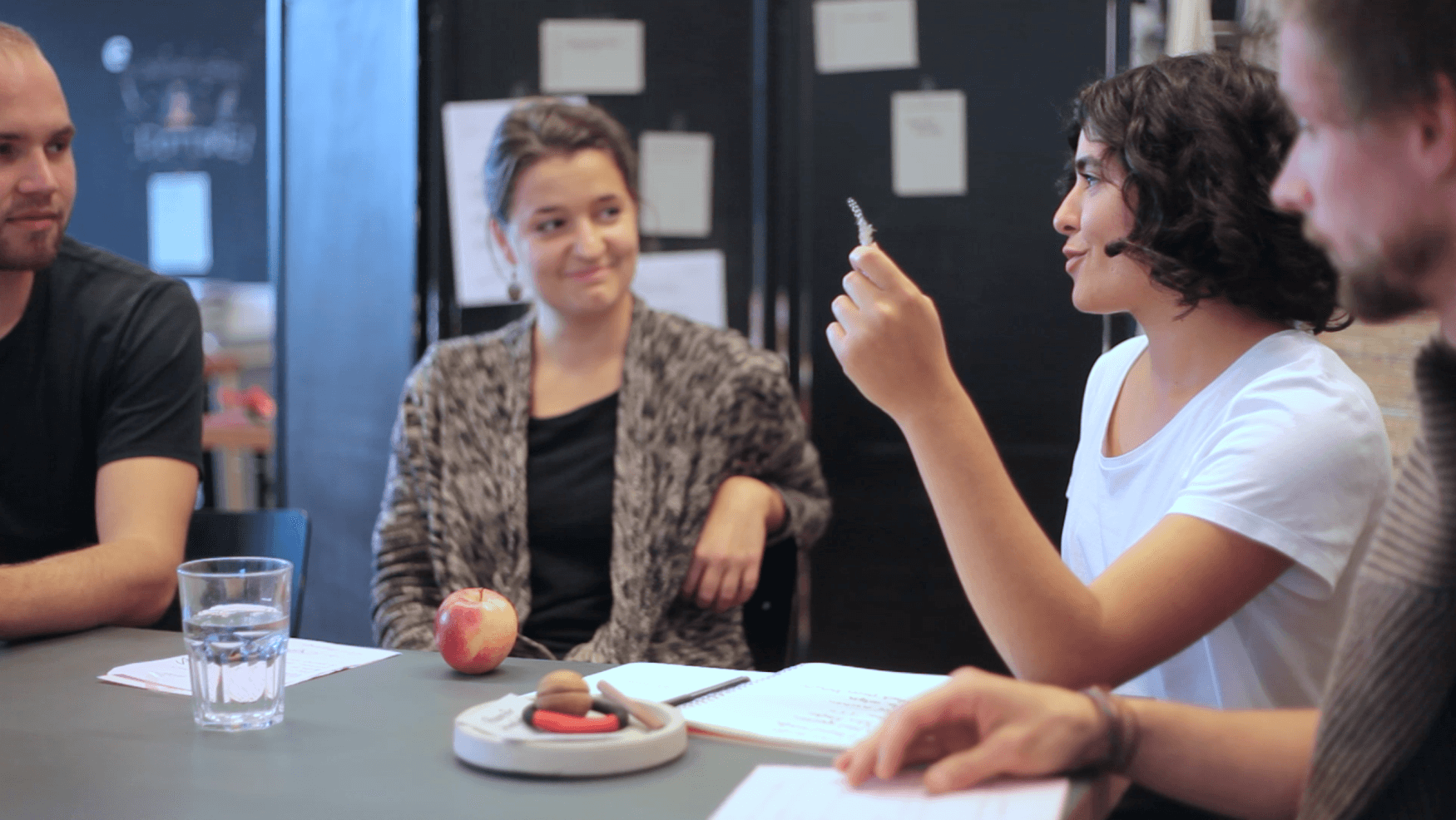
Reflection Map
1 | Making dynamics visible with haptic team map
The reflection map enables the user to take a bird’s eye view of the team situation. Setting up the team situation with abstract figures, like geometric shapes and different materials on a cardboard map initiates an internal conversation and reflection that helps to understand team dynamics, conflict situations, and social roles.
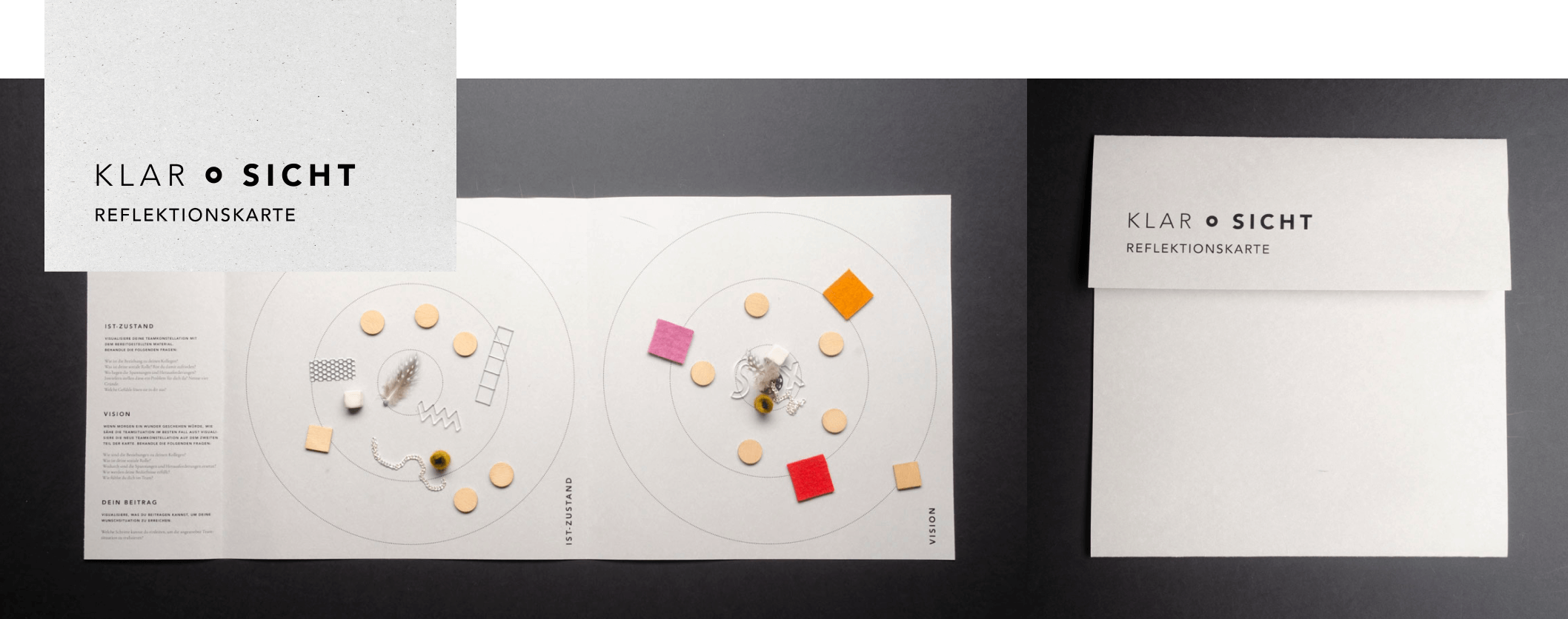
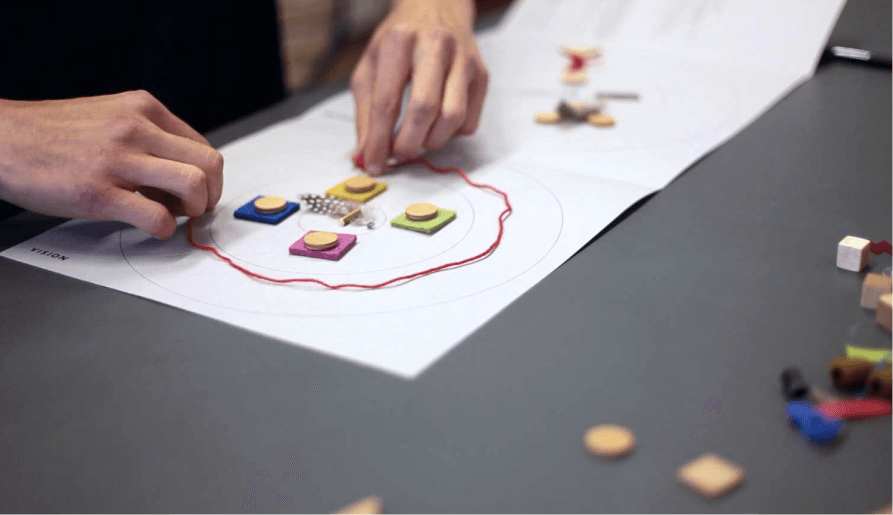

Reflection Map
1 | Making dynamics visible with haptic team map
The reflection map enables the user to take a bird’s eye view of the team situation. Setting up the team situation with abstract figures, like geometric shapes and different materials on a cardboard map initiates an internal conversation and reflection that helps to understand team dynamics, conflict situations, and social roles.

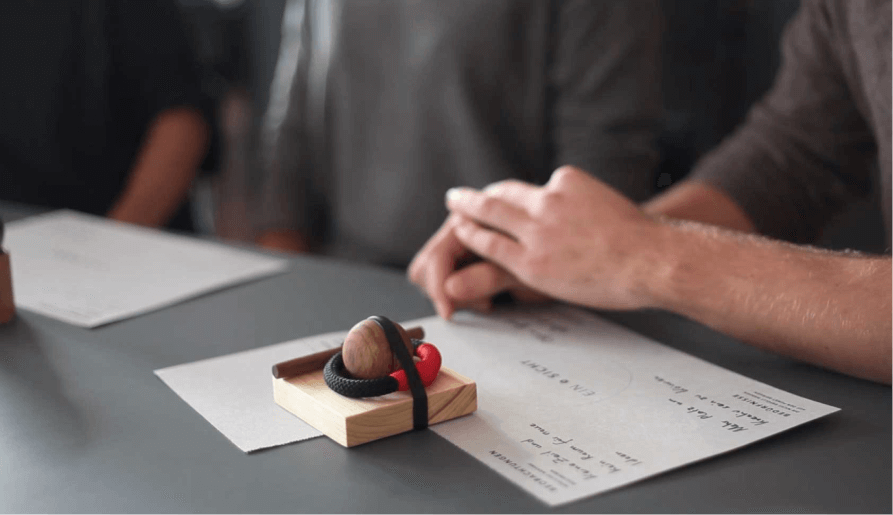
Communication Objects
2 | Addressing issues with object-based communication
These abstract objects of different materials and shapes help people to open up and communicate with their team members through haptic-visual support. Showing vulnerabilities and talking about feelings and needs is often taboo in professional contexts. Symbolic language helps the speaker to address team issues without attacking others. Using objects as explanation tools helps listeners to be more attentive and memorize what has been said.
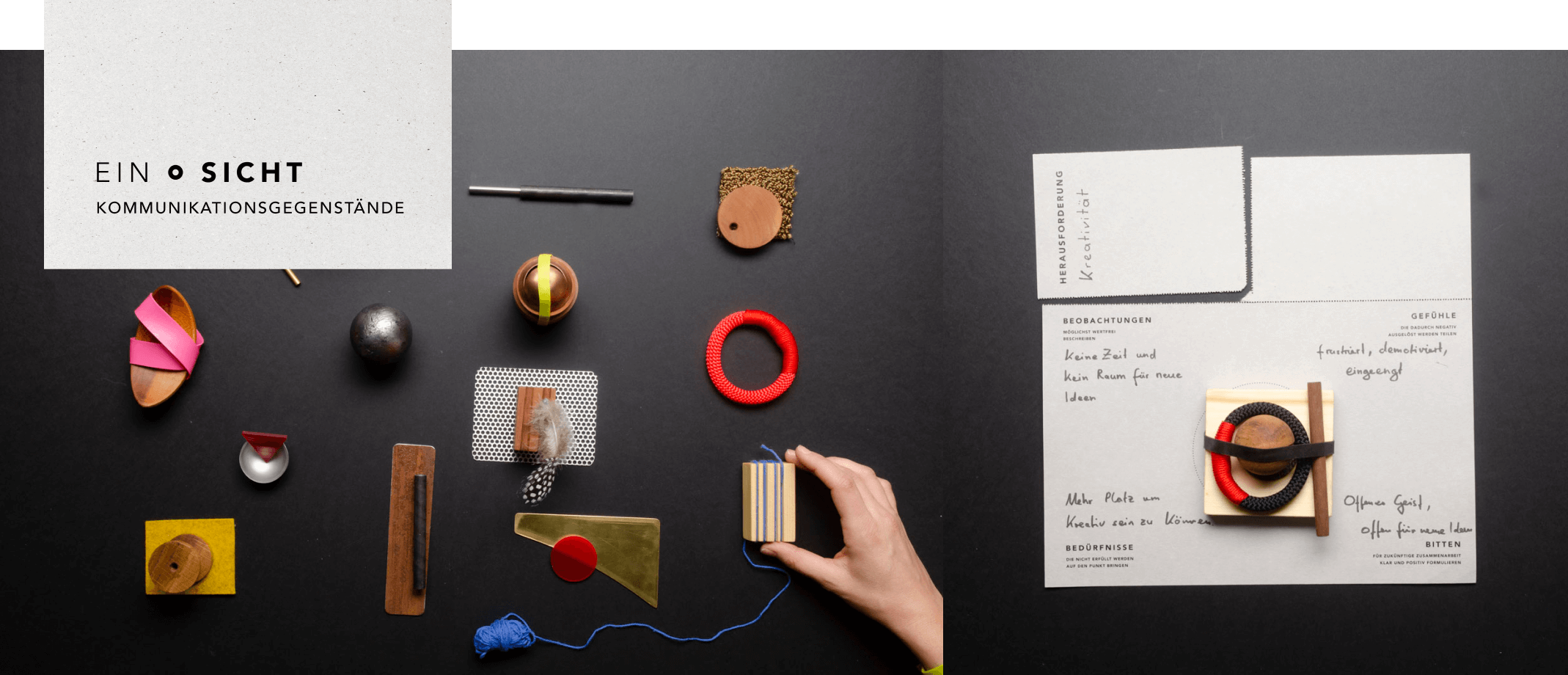
Communication Objects
2 | Addressing issues with object-based communication
These abstract objects of different materials and shapes help people to open up and communicate with their team members through haptic-visual support. Showing vulnerabilities and talking about feelings and needs is often taboo in professional contexts. Symbolic language helps the speaker to address team issues without attacking others. Using objects as explanation tools helps listeners to be more attentive and memorize what has been said.


Change Shapes
3 | Symbolic reminders to change behavior in the long run
On basis of the issues that have been addressed in the communication phase, the team will together decide on principles they want to work on in the upcoming months. To initiate change in the long run and not forget about the workshop’s content and chosen team objectives, the team creates a composition of objects and places them ritually in the bowl. These symbols serve as a non-verbal, object-based language to remember their agreements.
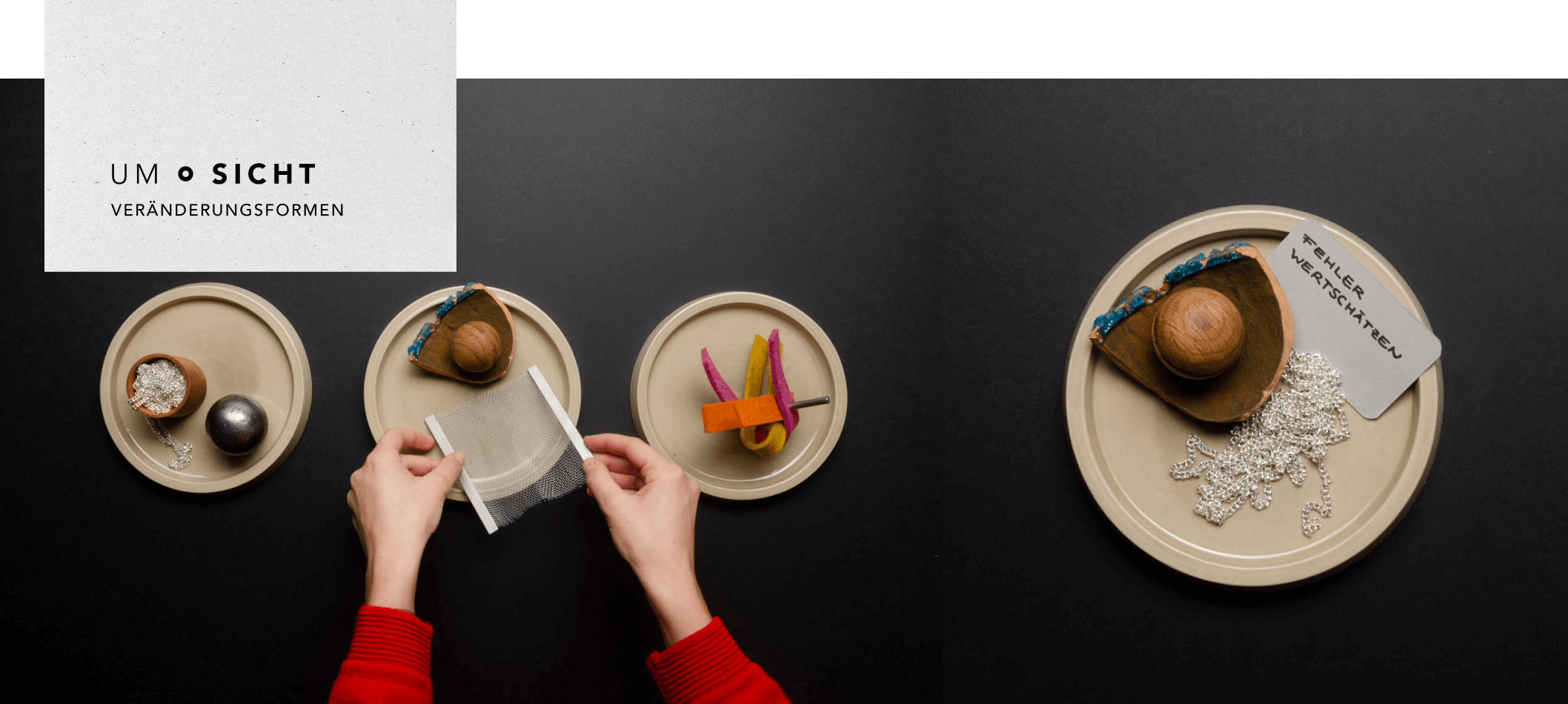
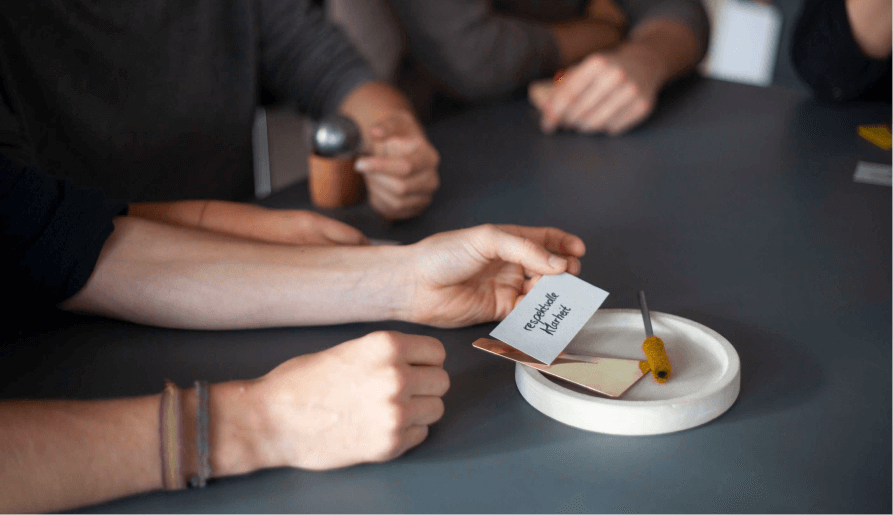

Change Shapes
3 | Symbolic reminders to change behavior in the long run
On basis of the issues that have been addressed in the communication phase, the team will together decide on principles they want to work on in the upcoming months. To initiate change in the long run and not forget about the workshop’s content and chosen team objectives, the team creates a composition of objects and places them ritually in the bowl. These symbols serve as a non-verbal, object-based language to remember their agreements.

